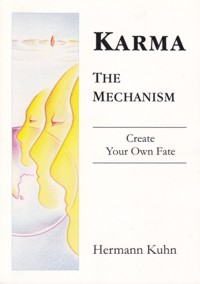
Tatashcha nirjara (23)
After its activation our bond to the activated karma is dissolved (nirjara). (23)
The activation of karma converts its latent energy into a form we can experience. The activation dissolves the bond between our consciousness and the respective karmic molecules. After its activation karma ceases to influence our life.
The bond is dissolved
- in the natural course of events (savipaka)
as soon as the conditions for an activation occur, or at the end of the maximum period for which a particular type of karma can be bound to us. In this natural sequence of events a long time may pass between the original binding of karma and its final dissolution.
- when its activation is forced (avipaka),
i.e. when we intentionally create the conditions that stimulate an activation. This mechanism reduces the amount of our karma (i.e. the amount of our unresolved themes of life) significantly faster - if it is handled in a correct way. The next chapter - 'How to Dissolve Karma' - explains this mechanism.
The Tattvarthasutra discriminates between two kinds of beings: Those who will reach ultimate freedom from all restricting karma (bhavya) and those who will not achieve this state (abhavya).
Those who seriously aspire freedom from all karmic limitations know intuitively what knowledge and what lines of action bring them closer to their goal. They do not restrict any part of their life, but rather arrange it in such a way that it makes their consciousness shift to higher dimensions.
All those not aspiring freedom from karmic limitations concentrate mainly on the material range of reality (sometimes on its more subtle aspects like art etc.). But as intelligent, clear and comprehensive the knowledge and perception of materially oriented persons may appear, their insights are and will remain temporary and do not contribute to inner growth. Everything they regard as 'progress' is accidental and will not last.
Whether we are able to reach this freedom or not does not depend upon the existence or lack of any special talent, exceptional ability or esoteric knowledge. The potential for reaching ultimate freedom exists in all living beings.There is no outside agency that determines who is developable and who is not.
We ourselves decide to which class of beings we belong. We either develop our potential abilities and become aware of the complete knowledge available to all beings, or we don't. When we follow our intuition towards growth and actively strive to unfold the innate abilities of our consciousness, then we are bhavya, then we will inevitably free ourselves from all karmic obstructions. If we do not follow these intuitive insights, we consequently will not reach this freedom.
It is however not a 'one-time' decision to become bhavya. We cannot lay back and say 'Well, I decided to become bhavya, now my enlightenment is guaranteed - nothing else to do today, let's go to the beach.' Unfortunately it doesn't work that way. We have to choose anew all the time. And this costs energy at first. And then more energy as we realize in what restricted state our consciousness is in. And we invest effort after effort and it doesn't seem to get brighter and we want to give up ten thousand times. And then one day it's done, then it dawns. Then we see through the mechanics that limit us, then we know how to really remove the obstacles to our higher dimensions and how to make enlightenment reality for us.
 Hermann Kuhn
Hermann Kuhn
